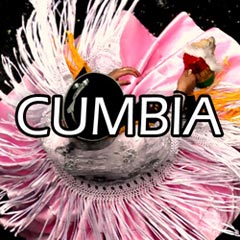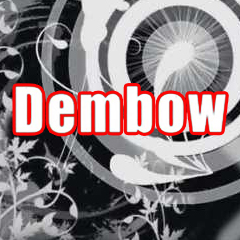Cumbia
ON AIR - PROGRAMMING
Flowing directly from Colombia and throughout South America, heating up the boiling city with colored skirts, ass shaking, and vibrating bodies. It makes for a lively atmosphere. Listen to Cumbia music, a popular American Latin dance music genre, developed in the Caribbean coasts of Panama and Colombia as a courtship dance. Cumbia is a traditional music genre that originated in Colombia, with influences from African and European cultures. This delightful blend of sounds creates a type of optimistic, joyful melody that delights the senses. The rhythms and beats make it difficult not to move as the tunes energise your every footstep. Cumbia continues to capture more enthusiasts with each passing day; it's well-known among Latinx music fans around the world. This genre features peasant people represented as dancers and performers wearing colorful traditional style clothing while they embrace improvisation. Stories highlighted in cumbia lyrics represent elements of love, liberation, sexuality and cultural fights against oppression. Typical Cumbia bands will sometimes include multiple percussion instruments layered on top of acoustic guitar, accordion, saxophone, brass and other traditional and contemporary sounds producing a captivating blend accepting an ever expanding list of creative ideas contributing to its charm. A truly remarkable style beloved by many! Listen to a playlist with the cumbia music, a latin sound that will give you energy and power from south america
The Joyful Journey of Cumbia: Bringing Color and Rhythm to the World
Have you ever been to a party where the room was filled with vibrant colors and lively music that made you want to dance? Chances are, you were listening to Cumbia, a popular music genre that hails from Colombia. This joyful and upbeat genre has been around for centuries and continues to be loved by people all over the world. In this article, we'll take a closer look at the history and significance of Cumbia, and why it continues to capture the hearts of music lovers everywhere.
Cumbia originated from the Caribbean coasts of Panama and Colombia as a courtship dance. Its upbeat rhythms and catchy melodies soon caught the attention of many, and it began to spread throughout Latin America. The word Cumbia is derived from an African word meaning dance, which shows the strong African influence on the genre. Over the years, it has evolved into what we now know as Cumbia, a cheerful and colorful music genre that celebrates life.
One of the unique characteristics of Cumbia is the way it represents the people who perform it. Peasant people are often the main performers, wearing colorful traditional style clothing while they embrace improvisation. This adds to the authenticity of the genre and makes it more relatable to those who come from humble backgrounds. The stories highlighted in Cumbia lyrics often represent elements of love, loss, and everyday life, making it easier for listeners to connect with the music.
Cumbia continues to capture more enthusiasts with each passing day. Its foundation is a delightful blend of sounds from African and European cultures, creating a type of optimistic and joyful melody that delights the senses. It's a genre that brings people together, regardless of their race, ethnicity, or language, as the music is well-known among Latinx music fans around the world. It's hard not to move your feet when the beats kick in, and the colorful skirts start to flow.
Cumbia has had a significant impact on the music world, and its influence can be heard in various other genres such as salsa, reggaeton, and bachata. Many modern artists have turned to Cumbia for inspiration, and the genre continues to evolve to this day. Further, it has spread beyond Latin America and has become a global phenomenon, with its cheerful tunes gaining recognition and appreciation worldwide.
In conclusion, Cumbia is a music genre that has come a long way since its humble origin. It's a genre that represents the culture, history, and people of Colombia and Latin America. Its lively beats and catchy melodies have captured the hearts and souls of people worldwide, making it one of the most well-known Latin music genres. It's a genre that transcends borders and brings people together - a true representation of the power of music. So next time you find yourself in a party with music that makes you want to dance, don't be surprised if it's Cumbia that's filling the room.
The Joyful Journey of Cumbia: Bringing Color and Rhythm to the World
Have you ever been to a party where the room was filled with vibrant colors and lively music that made you want to dance? Chances are, you were listening to Cumbia, a popular music genre that hails from Colombia. This joyful and upbeat genre has been around for centuries and continues to be loved by people all over the world. In this article, we'll take a closer look at the history and significance of Cumbia, and why it continues to capture the hearts of music lovers everywhere.
Cumbia originated from the Caribbean coasts of Panama and Colombia as a courtship dance. Its upbeat rhythms and catchy melodies soon caught the attention of many, and it began to spread throughout Latin America. The word Cumbia is derived from an African word meaning dance, which shows the strong African influence on the genre. Over the years, it has evolved into what we now know as Cumbia, a cheerful and colorful music genre that celebrates life.
One of the unique characteristics of Cumbia is the way it represents the people who perform it. Peasant people are often the main performers, wearing colorful traditional style clothing while they embrace improvisation. This adds to the authenticity of the genre and makes it more relatable to those who come from humble backgrounds. The stories highlighted in Cumbia lyrics often represent elements of love, loss, and everyday life, making it easier for listeners to connect with the music.
Cumbia continues to capture more enthusiasts with each passing day. Its foundation is a delightful blend of sounds from African and European cultures, creating a type of optimistic and joyful melody that delights the senses. It's a genre that brings people together, regardless of their race, ethnicity, or language, as the music is well-known among Latinx music fans around the world. It's hard not to move your feet when the beats kick in, and the colorful skirts start to flow.
Cumbia has had a significant impact on the music world, and its influence can be heard in various other genres such as salsa, reggaeton, and bachata. Many modern artists have turned to Cumbia for inspiration, and the genre continues to evolve to this day. Further, it has spread beyond Latin America and has become a global phenomenon, with its cheerful tunes gaining recognition and appreciation worldwide.
In conclusion, Cumbia is a music genre that has come a long way since its humble origin. It's a genre that represents the culture, history, and people of Colombia and Latin America. Its lively beats and catchy melodies have captured the hearts and souls of people worldwide, making it one of the most well-known Latin music genres. It's a genre that transcends borders and brings people together - a true representation of the power of music. So next time you find yourself in a party with music that makes you want to dance, don't be surprised if it's Cumbia that's filling the room.
2023-05-13
The tradicional Latin American music, the cumbia!
Rooted in the African, European, and indigenous music, Cumbia emerged as one of the popular music in Latin America. Although the birthplace of Cumbia remains debated within the folklorist, between Magdalena, Atlantico, or Panama, it traditionally originated from Colombia. Next, it dispersed and popularized to the Latin America countries, such as Mexico, Argentina, Chile, Nicaragua, and Peru. The blend between these three started to happen in the period of colonialization. Hence, Cumbia music symbolizes the fight of Latin American people to attain their freedom during the colonial era, the struggle in social classes, and also now become the identity of Latin American people in Colombia. The hybridity creates music imbued with unique characteristics shared by three different cultures.
The African music contributes to the rhythm which employed to the drums. In traditional cumbia music, the percussion instruments consist of the Tambora (Bass drums), Tambor Alegre (mid drum), and Lamador (small drum). Other rhythm instruments are maracas and guaches. Wide choice of percussion instruments in cumbia music creates the various tones in the music. While the wind instruments of traditional cumbia music come from the Colombian origin. There is gaita macho (male flute), Gaita hembra (female flute), and flauta de millo. All of these melodic instruments come from indigenous Colombian people. The traditional Cumbia music is mainly associated with dances, with the costumes based on the influence of European culture, and to be more specific, Spanish. Hence, this formed the traditional Cumbia music. However, of course, the Cumbia music adapted to the modernization and developed.
During modern times, Cumbia music has been developed in many styles, which Cumbia traditional music served as its core. Many musicians add different instruments, such as horns, clarinet, accordion and piano. One of the notable artists of cumbia music ins Celso Piña. Born in Mexico in 1953, he is one of the best artists who work on cumbia music in Mexico. As he is passed away now, his legacy of the cumbia works remain in the world, and he will forever be known as one of the influential artists. Listen to Macondo to find the Mexican musical influence in his song and Cumbia Poder to feels the tropical ambiance. However, if you feel like listening to the more traditional Cumbia music, enjoy Cumbia Soledeña to seek the organic sounds of traditional cumbia music. Andrés Landero also can become your alternative artist if you want to listen to the accordion melody like Celso Piña, try to listen to Mara Del Carmen and Tambó Tambó to witness the tropical ambiance in his music.
If you are looking for the modernized cumbia music and combine it the electronic music, try to listen to Bomba Estéreo works, such as Systema Solar to enjoy the combination of electronic music, rap, and cumbia music and Listen to To My Love if you prefer the slower music with the mix of tropical nuance and EDM. Carlos Vives is also an excellent alternative to more modern approaches of cumbia music. Try to listen to his collaboration with Shakira entitled La Bicicleta. Happy listening!
The African music contributes to the rhythm which employed to the drums. In traditional cumbia music, the percussion instruments consist of the Tambora (Bass drums), Tambor Alegre (mid drum), and Lamador (small drum). Other rhythm instruments are maracas and guaches. Wide choice of percussion instruments in cumbia music creates the various tones in the music. While the wind instruments of traditional cumbia music come from the Colombian origin. There is gaita macho (male flute), Gaita hembra (female flute), and flauta de millo. All of these melodic instruments come from indigenous Colombian people. The traditional Cumbia music is mainly associated with dances, with the costumes based on the influence of European culture, and to be more specific, Spanish. Hence, this formed the traditional Cumbia music. However, of course, the Cumbia music adapted to the modernization and developed.
During modern times, Cumbia music has been developed in many styles, which Cumbia traditional music served as its core. Many musicians add different instruments, such as horns, clarinet, accordion and piano. One of the notable artists of cumbia music ins Celso Piña. Born in Mexico in 1953, he is one of the best artists who work on cumbia music in Mexico. As he is passed away now, his legacy of the cumbia works remain in the world, and he will forever be known as one of the influential artists. Listen to Macondo to find the Mexican musical influence in his song and Cumbia Poder to feels the tropical ambiance. However, if you feel like listening to the more traditional Cumbia music, enjoy Cumbia Soledeña to seek the organic sounds of traditional cumbia music. Andrés Landero also can become your alternative artist if you want to listen to the accordion melody like Celso Piña, try to listen to Mara Del Carmen and Tambó Tambó to witness the tropical ambiance in his music.
If you are looking for the modernized cumbia music and combine it the electronic music, try to listen to Bomba Estéreo works, such as Systema Solar to enjoy the combination of electronic music, rap, and cumbia music and Listen to To My Love if you prefer the slower music with the mix of tropical nuance and EDM. Carlos Vives is also an excellent alternative to more modern approaches of cumbia music. Try to listen to his collaboration with Shakira entitled La Bicicleta. Happy listening!
Tag: cumbia, colombia, Latin American, tradition
What are you thinking about?



